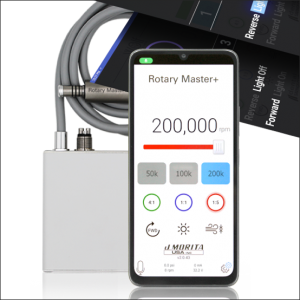
Direct dental pulp capping using calcium hydroxide: a 35-year follow-up
Lara Figini
Advanced carious lesions are the leading cause of pulp disease. Management of mature teeth with deep carious lesions that have exposed vital pulp includes attempting pulp preservation by pulp capping, or pulpotomy or complete removal of the pulp (pulpectomy) to prevent necrosis, infection, and apical periodontitis. Several variables are suspected to influence the indication and outcome of pulp capping procedures, including patient age, tooth type, bleeding time, size of pulp exposure, and pulp material.
Materials, methods
In a retrospective study, the authors evaluated the long-term outcome of the direct pulp capping technique in mature teeth with pulp exposure due to advanced caries with diagnosis of reversible pulpitis. The treatments were performed for a period of 15 years by a single operator. Under magnification, the caries was completely removed, the exposed pulp examined and covered with either pure calcium hydroxide or a calcium hydroxide cement. The cavity was restored, and the long-term outcome was evaluated as 1 to >35 years. Asymptomatic teeth that responded to pulp sensitivity tests within normal limits and that showed no radiographic periapical changes were classified as successful. Teeth with no response to pulp tests or with radiographic images of apical periodontitis were classified as failures. The effects of independent variables (gender, age, symptoms, number and size of pulp exposures, bleeding time, capping material used, type of overlay material used, and final coronal restoration) on the outcome were also evaluated.
Results
The authors studied 225 teeth in 148 patients. The success rate of the direct pulp capping procedure was found to be 100%, 95%, 95%, 86%, and 89% at 1-, 5-, 10-, 20-, and 35-year follow-ups, respectively. The main variable that significantly affected the treatment outcome in all follow-up periods was the quality/presence of the coronal restoration (P<0.001). Other variables associated with outcome were size and number of pulp exposures at the 20-year follow-up and exposure size, capping material, and type of restoration at the 35-year follow-up. Multiple regression analysis confirmed the results for exposure size (P < 0.05) and revealed a higher 5-year failure rate when varnish was used as a base.
Conclusions
From the data of this study, the authors noted a high success rate of the direct pulp capping with calcium hydroxide was observed, especially in the first 10 years following treatment. The main variable influencing the outcome is the quality of the coronal restoration.
Clinical implications
With a careful selection of cases by the dentist, the direct pulp capping procedure can be considered a predictable therapy to save the dental pulps exposed to caries.
Domenico Ricucci, Isabela N. Rôças, Flávio R.F. Alves, Pedro H. Cabello, José F. Siqueira, Jr. "Outcome of direct pulp capping using calcium hydroxide: a long-term retrospective study." Journal of Endodontics (2022), doi: https://doi.org/10.1016/j.joen.2022.11.005.
 Related articles
Related articles
Dental decay is the most common chronic disease of children and it disproportionately affects those living in poverty, but the reasons for this are not clear. Passive smoking may be a modifiable risk...
Oral Hygiene & Prevention 20 August 2025
Personal oral hygiene and dental caries: A systematic review of randomised controlled trials
To conduct a systematic review of randomised trials assessing the association between personal oral hygiene and dental caries in the absence of the confounding effects of fluoride.
The new CaviSense Toothpick helps detect signs of early-stage cavities and has proven useful in traditional dental clinics as well as mobile operations as both a screening tool used during non-x-ray...
Pediatric dentistry 08 April 2025
Oral rehabilitation in pediatric dentistry: a clinical case report
Despite the emphasis and effort devoted to preventive dentistry, massive coronal destruction caused by dental caries or trauma is still seen in pediatric dentistry practice today.
Oral Hygiene & Prevention 15 January 2025
The aim of this study was to assess the influence of dietary and hygiene habits on the prevalence and intensity of dental caries.
 Read more
Read more
Oral pathology 25 November 2025
Virtual microscopy (VM) is a technology for showing microscope slides using computers and could be considered a progression of classic methodology using optical microscopes.
For every assist this season, the insurance provider will donate $25 to TUSDM Cares for Veterans
Products 25 November 2025
J. MORITA USA, a world leader in handpiece technology, has announced the Rotary Master+ Electric Motor. Compatible with Morita TorqTech electric attachments and most competing electric handpieces on...
News 25 November 2025
Let’s be honest: nothing kills the vibe quite like bad breath. However, while 85% of people prefer for someone to tell them if their breath needs some freshening up, only 15% are willing to break...
News 25 November 2025
Vitana Pediatric & Orthodontic Partners (Vitana), a dentist-led dental partnership organization (DPO) focused exclusively on elite pediatric dental and orthodontic practices with operations in...














